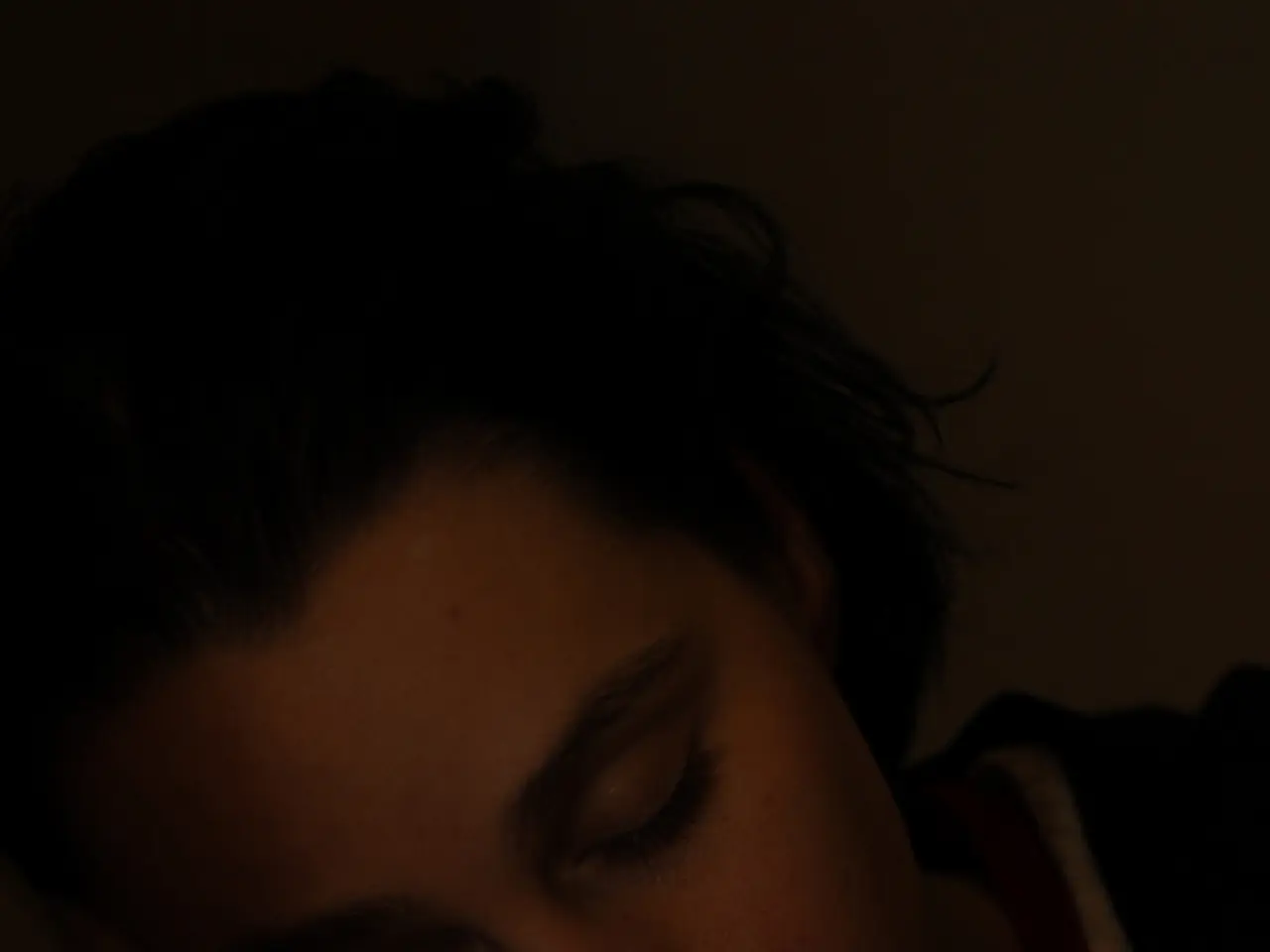Unveiling the Mysteries of Sleep Paralysis: A Look into the Brain's Hallucinatory Phenomena
Sleep state immobilization: Unraveling the physiological processes in sleep paralysis
Sleep paralysis, a peculiar condition where individuals find themselves conscious but unable to move while transitioning between sleep stages, is a fascinating subject that has long intrigued researchers. During these episodes, hallucinations are common, and understanding the brain's role in these phenomena is crucial. Here's a closer look:
The Neurochemical Aspect
Hallucinations in sleep paralysis are linked to changes in neurotransmitter activity, particularly in serotonin pathways. Alterations in the activation of 5-HT2A receptors, which influence perception and mood, can facilitate hallucinations [5].
REM Sleep Intrusion
Sleep paralysis involves an overlap of REM and wakefulness states, where the brain’s REM sleep mechanisms intrude into wakefulness. This intrusion can lead to the hallucinations typically seen in REM sleep, as the brain is in a state of heightened and altered consciousness [1][3].
Active Brain Regions
Areas such as the temporal lobe, involved in processing sensory information, may be active during hallucinations, contributing to the perception of unreal stimuli.
The Role of Fear and Anxiety
The fear and anxiety associated with sleep paralysis can amplify the perception of hallucinations, creating a feedback loop where the fear intensifies the hallucinatory experience [3].
Factors Influencing Sleep Paralysis Occurrence
Several factors can predispose individuals to sleep paralysis and hallucinations:
- Sleep Deprivation: Lack of sleep or disrupted sleep patterns can increase the risk of sleep paralysis episodes [3].
- Sleep Disorders: Conditions like narcolepsy often involve sleep paralysis and hallucinations due to disruptions in REM and NREM sleep cycles [1][3].
- Genetic Predisposition: Some people may be more prone to sleep paralysis due to genetic factors [2].
- Stress and Anxiety: High levels of stress and anxiety can trigger sleep paralysis episodes [3].
- Sleep Position: Sleeping on one’s back can increase the likelihood of sleep paralysis, possibly due to increased pressure on the airway or altered breathing patterns [3].
Researchers have also identified other potential factors behind sleep paralysis, such as stress or anxiety, sleep deprivation, narcolepsy, PTSD, jet lag, heartburn, or alcohol [4].
To combat repeat experiences of sleep paralysis, adopting a healthier sleep schedule, avoiding going to sleep on a full stomach, refraining from having caffeine and alcohol close to bedtime, and doing something relaxing before bed can help.
Approximately 30% of the global population experiences sleep paralysis at least once throughout their lifetime [4]. It occurs during the transition in or out of REM (rapid eye movement) sleep, where we regain consciousness before the muscles regain their freedom from REM-induced paralysis [2][3].
Dr. Baland Jalal, a Harvard University researcher and leading expert on sleep paralysis, experienced his first episode during his late teens. He believes that the brain creates fantastical distractions during sleep paralysis as a natural reaction to escape a paralysing situation [1].
Dr. Matthew P Walker, from the Center for Human Sleep Science at the University of California, Berkeley, explained that during sleep paralysis, the awake, fidgety mind is momentarily fighting the still-asleep physical vessel. Sleep paralysis can last up to 20 minutes [3].
Sleeping on one’s back increases the likelihood of sleep paralysis due to snoring or sleep apnea, so opting for any other comfortable position is recommended. If one tends to end up on their back even after falling asleep in another position, placing a pillow on either side can stop rolling over all the way [3].
- News articles highlighting sleep paralysis often discuss its association with health-and-wellness, as factors such as sleep deprivation, stress, and sleep disorders can increase its occurrence.
- In the realm of science, investigations into sleep paralysis have revealed its connection to neurotransmitter activity, particularly serotonin pathways, which influence hallucinations and perception during episodes.




